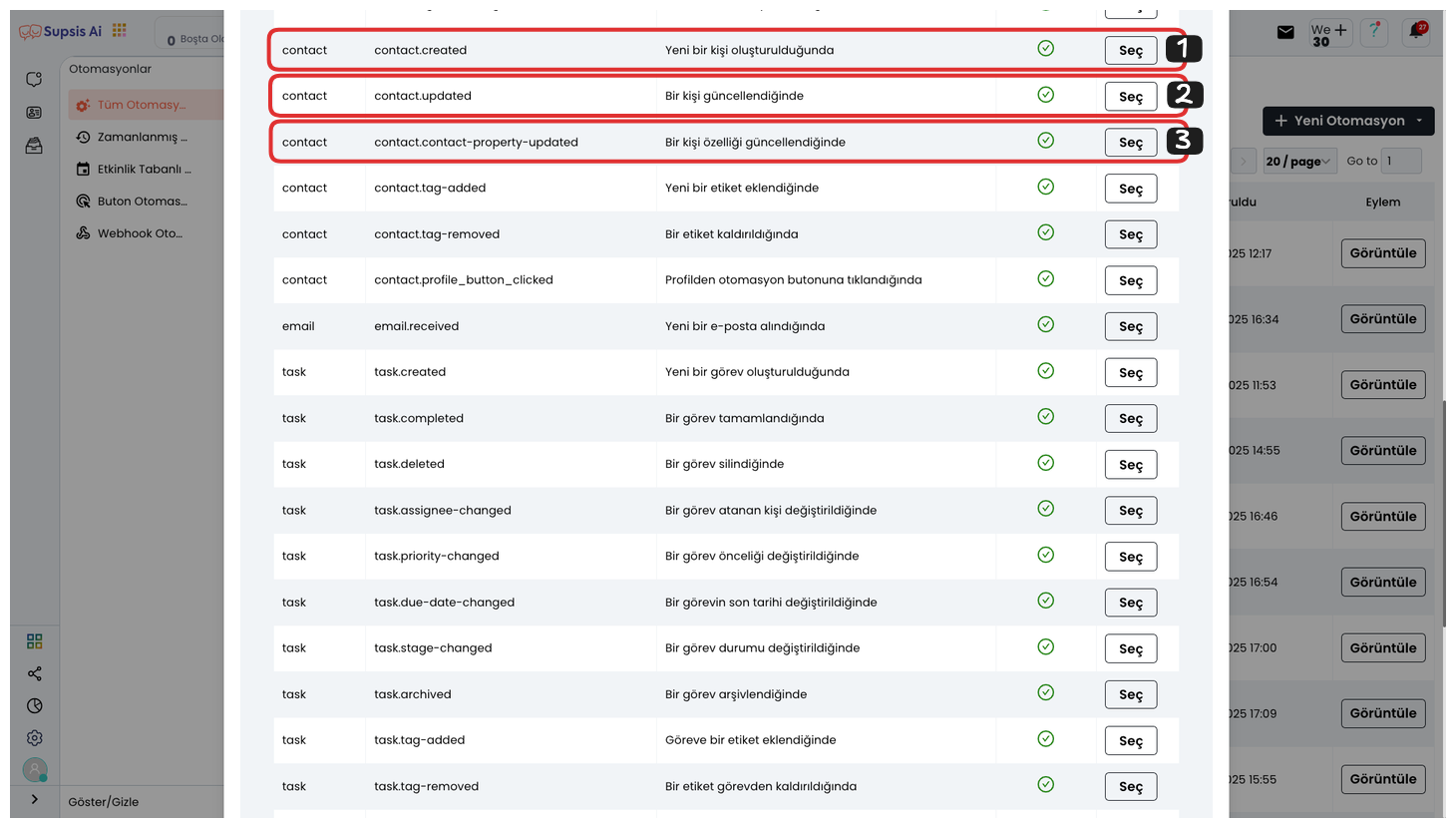Contact Card Action Based Automations
Contact Card Action Based Automations are automations that are triggered when any event related to contacts occurs. These types of automations work automatically when a contact record is created, updated, or deleted. When contact data changes, these automations trigger specific actions, making data management more dynamic and efficient. For example, when a new contact record is created, a follow-up task can be started, or when information about an existing contact is updated, a notification can be sent automatically. These automations optimize data accuracy and customer interactions.

Contact Card Action Based Automations:
- When a New Contact is Created
- When a Contact is Updated
- When a Contact Property is Updated
1-) When a New Contact is Created
This Automation is triggered when a new contact record is created. By automating all operations related to adding a new customer or user, it ensures that data is managed quickly and accurately. Thanks to this automation, when a new contact is recorded, specific actions such as sending a welcome message, starting a follow-up task, or creating a personalized knowledge base for the contact can occur automatically. This way, user data accuracy and customer interactions are managed more efficiently.
2-) When a Contact is Updated
This Automation is triggered when a contact's information is updated. Any change in the contact card, such as contact information, department, status, or other personal data being updated, triggers this automation. Thus, quick responses can be given to changes made regarding contact information. For example, when a contact's phone number is updated, an automatic confirmation message can be sent, or a report can be created about changes made to contact information. Such automations help you keep customer data always up-to-date and optimize business processes.
3-) When a Contact Property is Updated
This Automation is triggered when a contact's property is updated. When a specific property in the contact card changes, such as user role, department, email address, or one of the other personal properties being updated, this automation is triggered. Such automations allow instant monitoring of data changes and taking quick action. For example, when a contact's status changes, a notification can be sent automatically, or a follow-up task related to this update can be created. These automations are extremely useful for ensuring that data within the organization remains accurate and up-to-date.